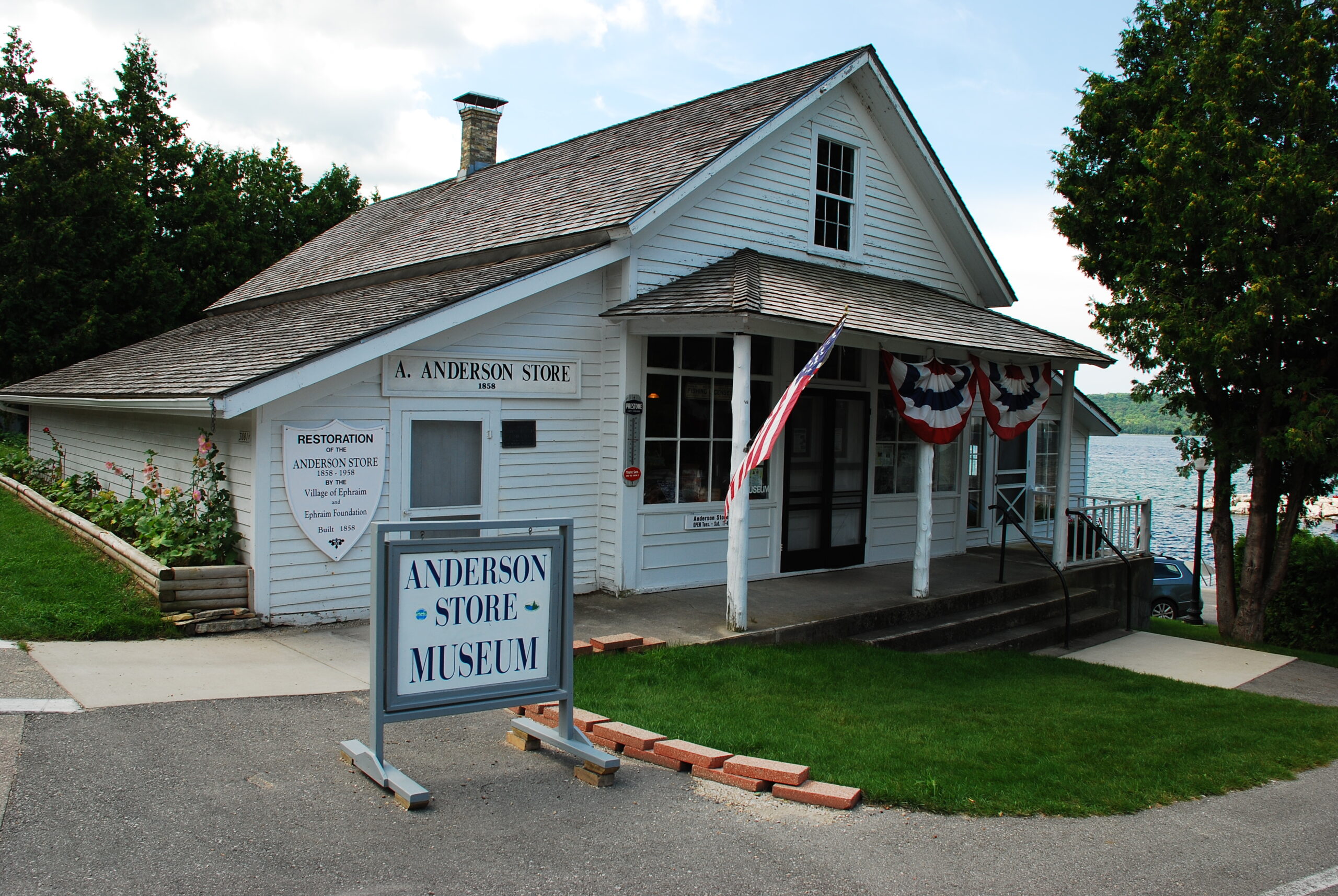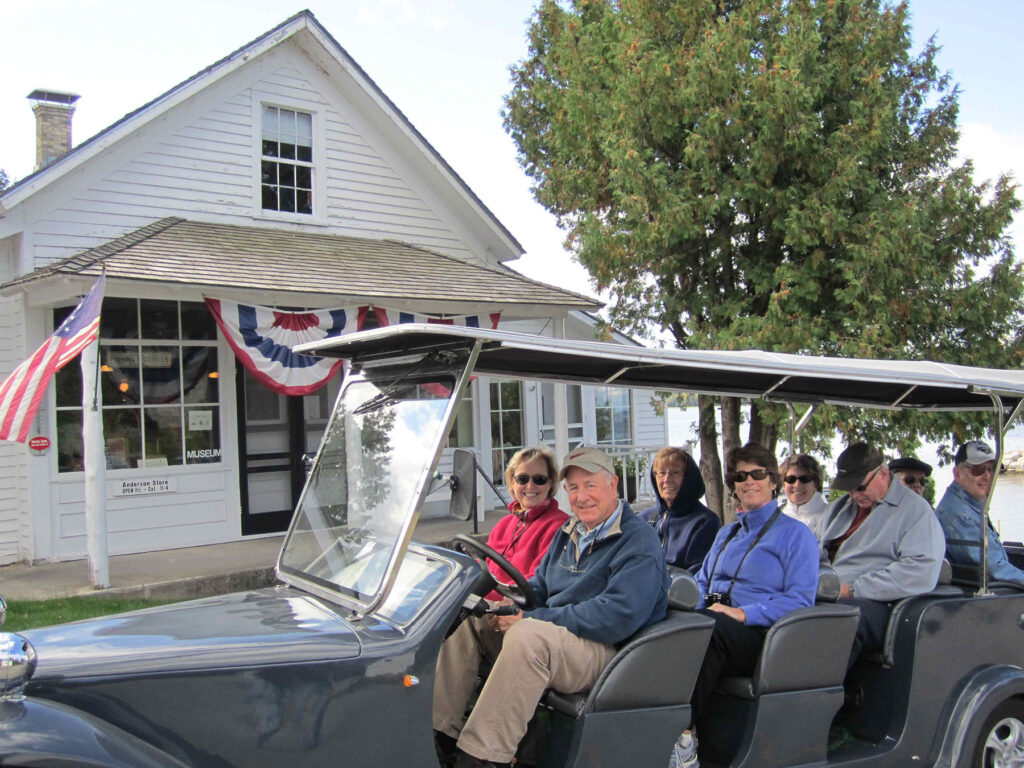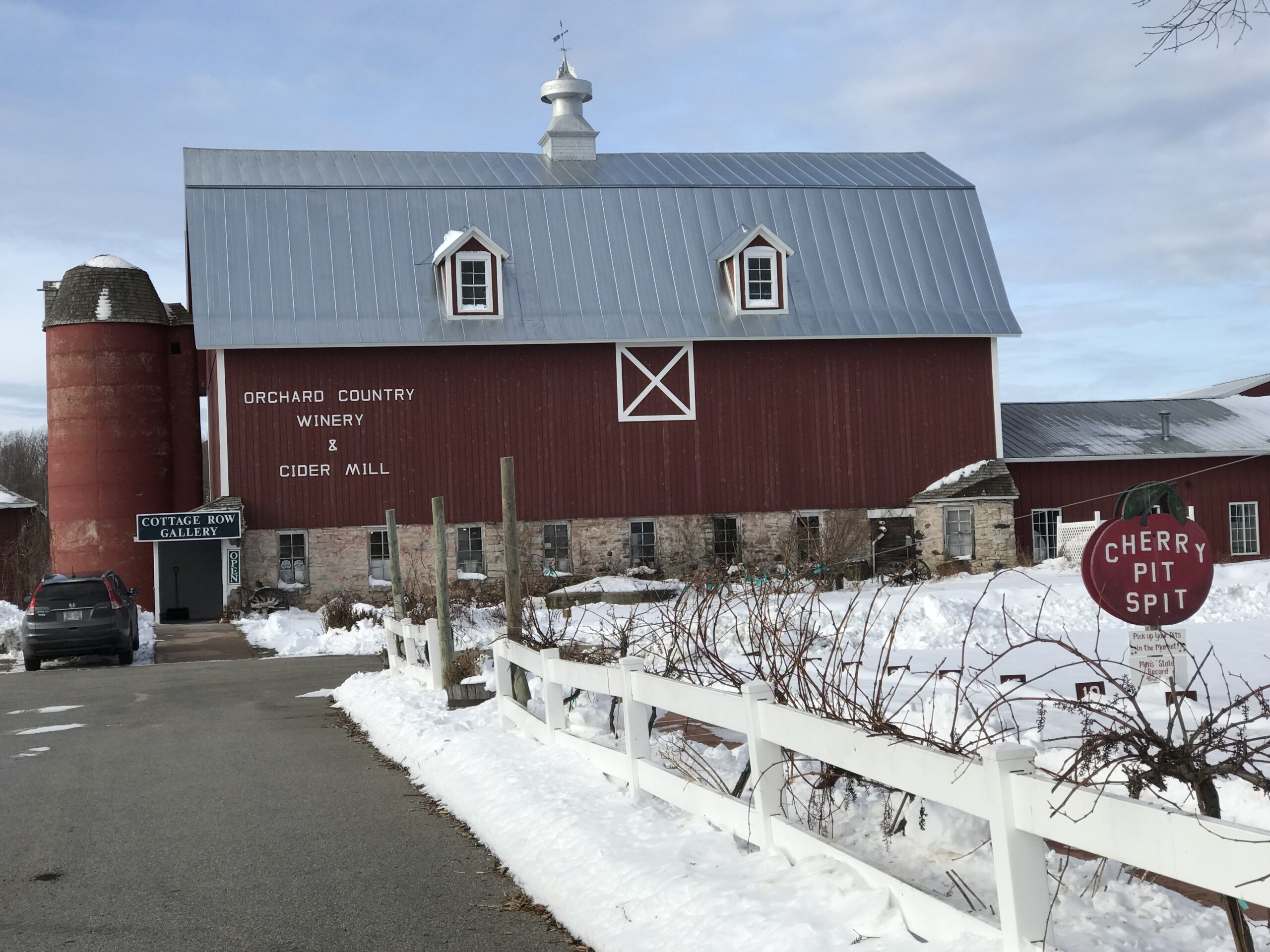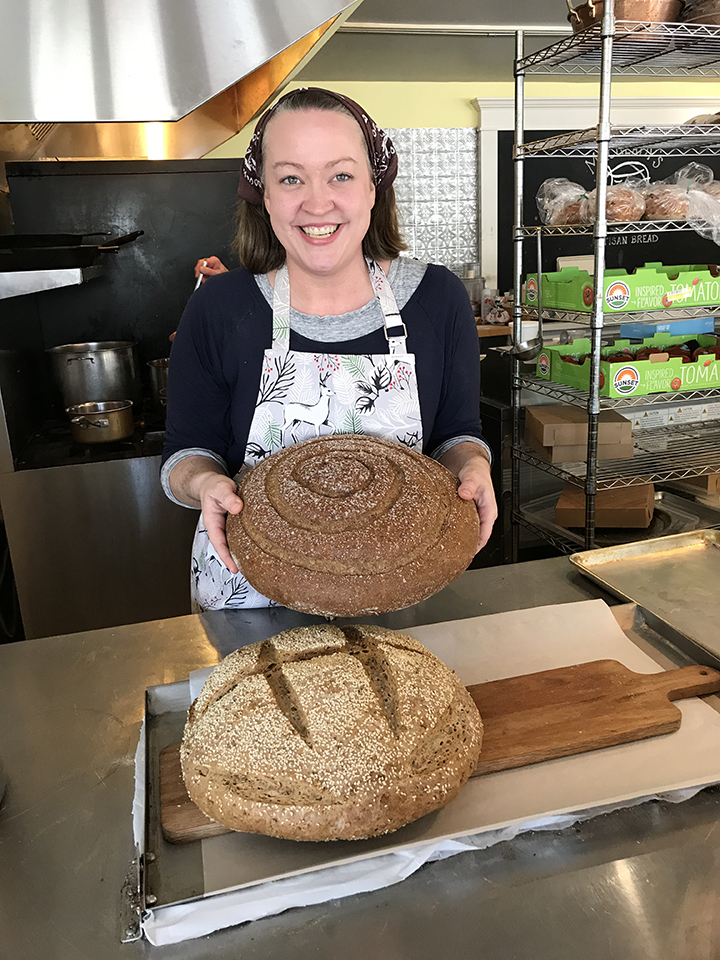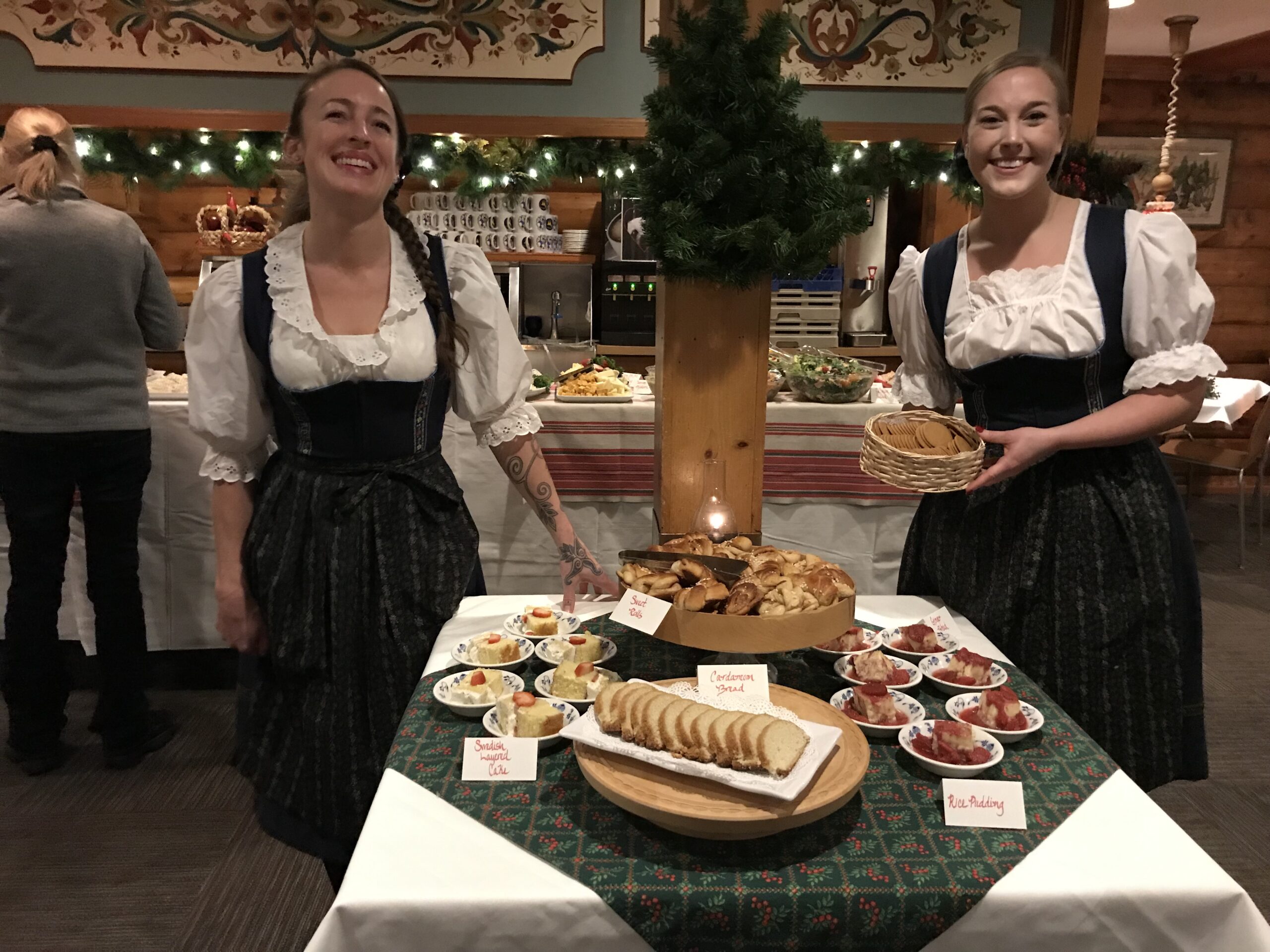Door County, Wisconsin, the 70-mile long peninsula that juts north into Lake Michigan, is synonymous for spring cherry blossoms, grazing dairy herds and lots of summer tourists. It became a large Scandinavian settlement in the mid-1800s as Swedes and Norwegians were reminded of their homeland by the bountiful fishing and picturesque countryside. From red barns with white window frames to wooded forest lining the rocky shoreline, the peninsula is dotted with Scandinavian architecture and customs.
The village of Ephraim, nestled in the heart of the Door County Peninsula on the shores of Eagle Harbor, takes pride in its roots. Here the Ephraim Historical Foundation, founded in 1949, is “where Door County’s past lives today.” A group of dedicated volunteers and staff work to preserve historical structures and share their rich local heritage through community outreach and education.
Rev. Andreas Iverson, an immigrant Moravian evangelist born in Norway and ordained a Lutheran minister, founded Ephraim in 1853. In February of that year, he and three followers walked north over the ice from Green Bay to the wilderness that later became Ephraim. With a $500 loan, he purchased 425 acres of government land. Church services and school classes were held in his home until the construction of the church. Designed by Iverson and built by him and the congregation, this first church on the Door County peninsula was completed in 1859.
The town soon attracted many European settlers. These immigrants, true pioneers fueled by hard work and innovation, laid the groundwork for Ephraim today. From 1880 onward, tourism has been a focus of the economy. People enjoyed the peaceful beauty of this quiet town and the most accessible shoreline of all Door County communities. Some visitors were so smitten they purchased property and became summer residents, often retiring to the community and adding to its heritage.
In 1857 Reverend Iverson, understanding the need for education, donated land behind his home, and soon a schoolhouse, constructed of flat-hewn logs, became the region’s earliest public school. Pauline Larsen, the first teacher, was paid four dollars a week and taught lessons in both English and Norwegian. In 1880, homesteaders built the one-room Pioneer Schoolhouse, today owned by the Ephraim Historical Foundation. Cordelia Burt, its first teacher, received seven dollars a week and taught the basics of “reading, writing, and rithmetic” to grades one through eight. By the 1920s and 1930’s, some 45 to 68 students were still enrolled until its closure in 1949.
The story of the Anderson Store Museum has its roots in Halvor and Aslag Andersons’ arrival in the 1840’s to find work in the lumber industry in the Upper Peninsula of Michigan. Thomas Goodletson, a fellow Norwegian the brothers had known in the old country, told them about the new settlement of Ephraim, and that Rev. Iverson was searching for a builder of a deep-water dock. The brothers took their carpentry skills to Ephraim where they reached agreement with Rev. Iverson to buy land from the congregation for $1.25 per acre and to build the dock. Afterwards, the brothers built homes. Alsag also built a General Store that the family operated for a century. In the 1960s, the Ephraim Historical Foundation began operating the Anderson Store as a museum and in the year 2000, they were able to purchase it with a generous anonymous donation.
Today, the Ephraim Historical Foundation hosts events for the entire family beginning in June through the festive holiday season. The generosity of many volunteers and donors over the years has made free admission possible to all historic buildings, including the Anderson Barn, Anderson Store, Pioneer Schoolhouse, Goodletson Cabin and Iverson House Museums. Docents in period dress are on duty at each site. The Svalhus Research Library is open for the study of local history and genealogy. Free programs also include guided walking tours, a tram tour ($5 charge) as well as special events.
Side Dish
Try Lautenbach’s Orchard Country Winery & Market in nearby Fish Creek. The Montmorency cherry crop is picked during summer harvest, later appearing in wine and hard cider, pies, tart cherry juice, dried cherries, cherry jams and pie fillings. In Egg Harbor, the MacReady Artisan Bread Co. sells delicious sunflower flaxseed bread, cherry scones, cherry coffeecake and cherry bread. Attend the unforgettable Fish Boil dinner at White Gull Inn and taste traditional fare at Al Johnson’s Swedish Restaurant. And, of course, don’t forget that Wisconsin dreams in cheese. Cherry cheddar from Renard’s Cheese can’t be beat!
For complete information, see www.ephraim.org or call 920-854-9688.
Bio
Cynthia Elyce Rubin, Ph.D. is a visual culture specialist, travel writer and author of articles and books on decorative arts, folk art and postcard history.

